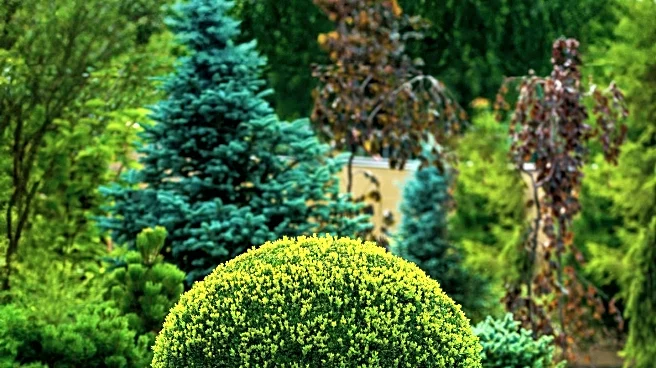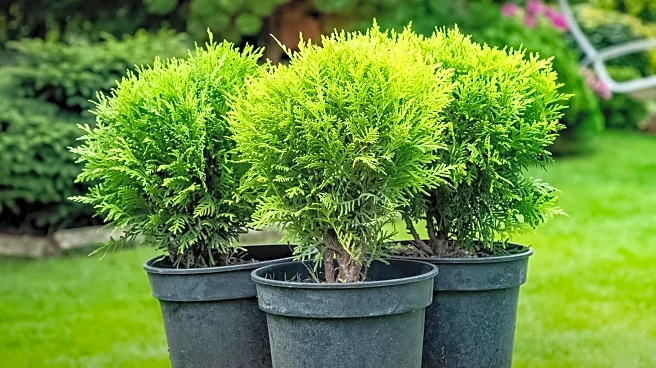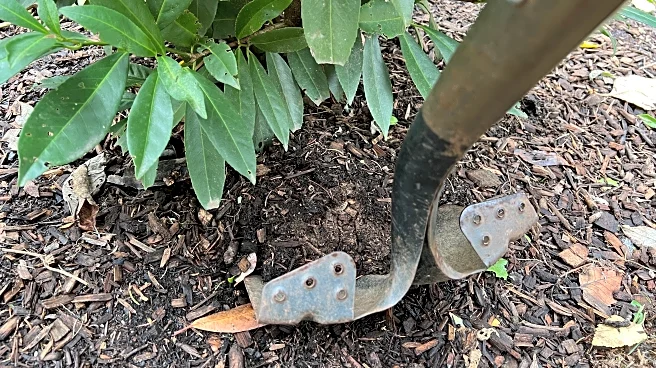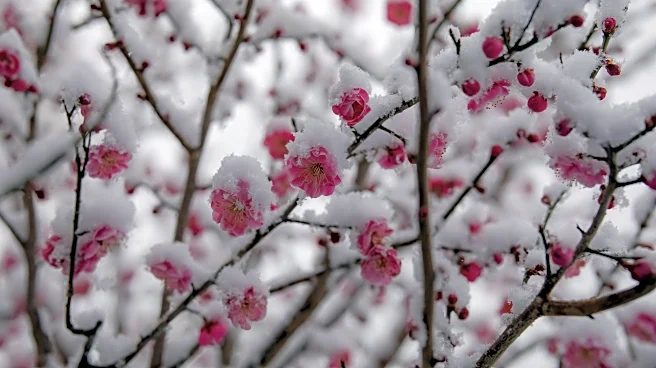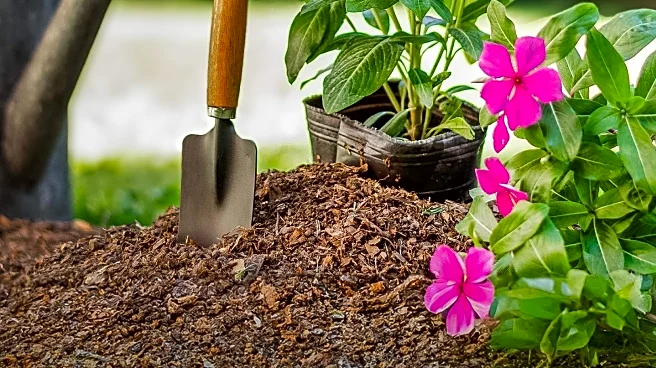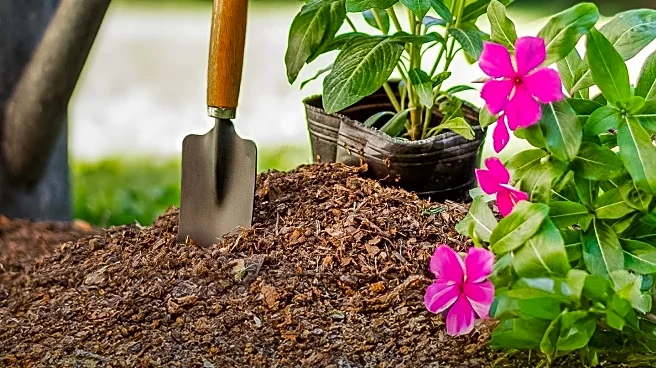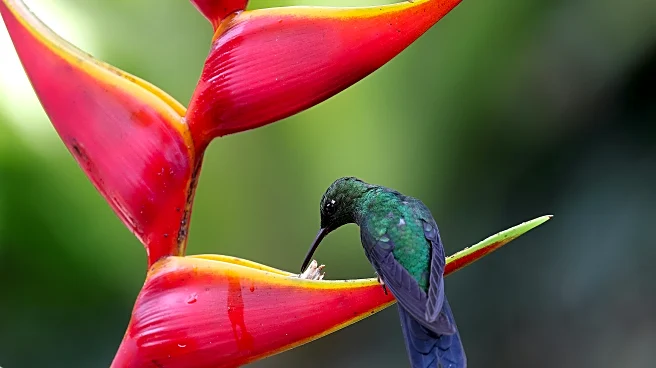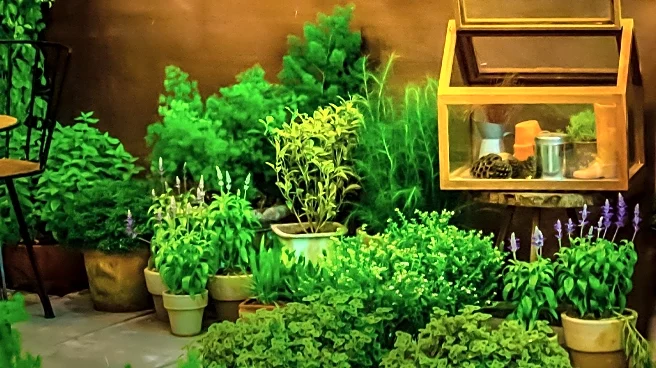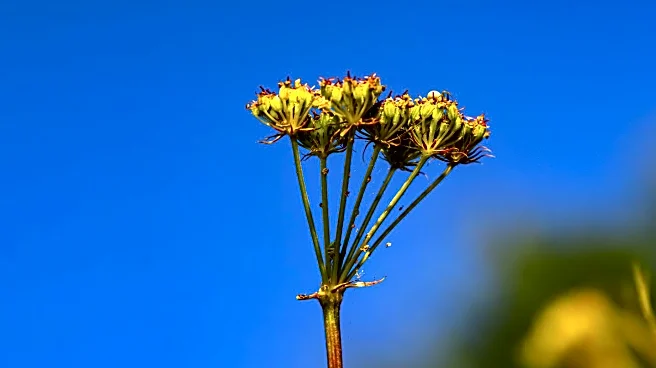What's Happening?
As the gardening season concludes, many gardeners are considering relocating shrubs to improve their garden layout. Proper timing is crucial for successful transplantation. Shrubs that bloom in late summer
and fall should be moved in spring, while spring and early summer bloomers are best relocated in fall. The process involves careful consideration of root depth and width, ensuring new holes are twice the width of the roots and exactly as deep. The article provides detailed steps for digging, transporting, and planting shrubs to minimize root exposure and ensure proper growth conditions.
Why It's Important?
Transplanting shrubs at the right time and with the correct technique can significantly impact their survival and growth. Proper transplantation ensures that shrubs establish strong root systems, which are vital for their long-term health and resilience. This practice is essential for gardeners looking to optimize their garden layout and enhance plant health. By following recommended guidelines, gardeners can prevent common issues such as root damage, improper planting depth, and inadequate soil conditions, leading to thriving plants and a more aesthetically pleasing garden.
Beyond the Headlines
The article highlights the importance of patience and planning in gardening, emphasizing that rushing the transplantation process can lead to plant stress and failure. It also touches on the broader implications of gardening practices on environmental sustainability, as healthy plants contribute to biodiversity and ecological balance. The advice provided can help gardeners make informed decisions that support both their personal gardening goals and broader environmental considerations.
